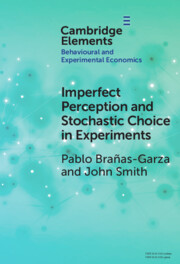Element contents
Imperfect Perception and Stochastic Choice in Experiments
Published online by Cambridge University Press: 16 December 2023
Summary
Keywords
- Type
- Element
- Information
- Online ISBN: 9781009049207Publisher: Cambridge University PressPrint publication: 01 February 2024
References
- 2
- Cited by

